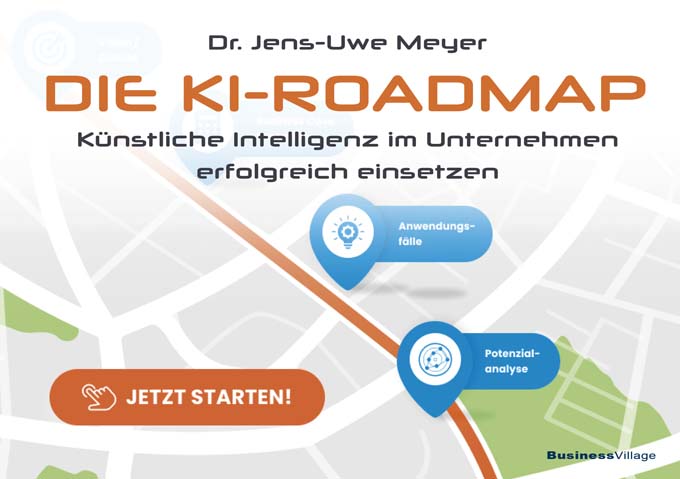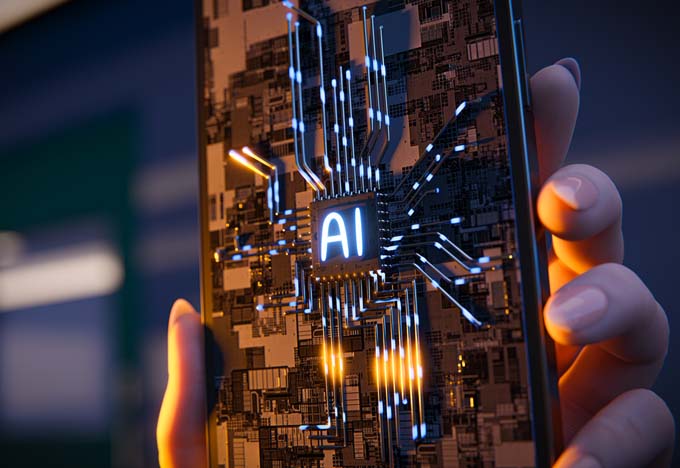The AI roadmap: using artificial intelligence successfully in the company
In his new book, Dr Jens-Uwe Meyer explains how companies can identify, evaluate and implement AI applications in their own organization.

"The AI Roadmap: Successfully Implementing Artificial Intelligence in Companies" is the title of the new book by Dr. Jens-Uwe Meyer, published by Verlag BusinessVillage has been published. In it, the digitalization and innovation expert, who is himself the CEO of a software company, explains how AI solutions will change our economy and society in the near future - and at such a rapid pace that he speaks of "fast disruption" instead of change and transformation.
Building on this, Meyer, who is also a sought-after speaker, drafts a roadmap on how companies can first identify AI application possibilities in their organization, then find and evaluate possible solutions and finally implement them - all based on a vision that is backed up with business cases and key business figures.
The 240-page work by Meyer, who has already written thirteen books, is based on the following thesis: In the coming years, the so-called KIRA - a combination of artificial intelligence, robotics and automation - will radically change the corporate landscape and this change will affect all companies and their employees across all industries. And management must prepare for this, although it is still largely unclear today: What other technologies will be available in the near future? How can AI be integrated into company processes? What new opportunities and risks will arise from the increased use of AI and AIRA?
In the first two chapters of his book, Meyer explains what this means for the management thinking and actions of decision-makers. He then outlines an action plan, known as a roadmap, on how companies can first find use cases for artificial intelligence and then evaluate their feasibility and calculate and realize added value.
One of the book's strengths is that, in an environment in which changes are increasingly no longer linear but disruptive, it provides readers with a planning tool in the form of the AI roadmap that helps them to ask the right questions and find solutions; furthermore, it does not reflect on the topic of AI in isolation, but in conjunction with the two megatrends of robotics and automation.
Source: www.die-profilberater.de









